Adventures on the Facade
There's big bubble of plastic around the front of the house, so large-scale pictures are hard to come by, but over the weekend I went up on the scaffolding and took some photos of the exterior restoration so far.
For the last couple of months, our restorationist, Woody, has been hard at work stripping the old paint off the house, pulling damaged trim, and getting us ready to restore the facade to the original Victorian appearance.
The first job Woody worked on was tracking down the leak in the east side windows. This photo shows a clue about that leak:
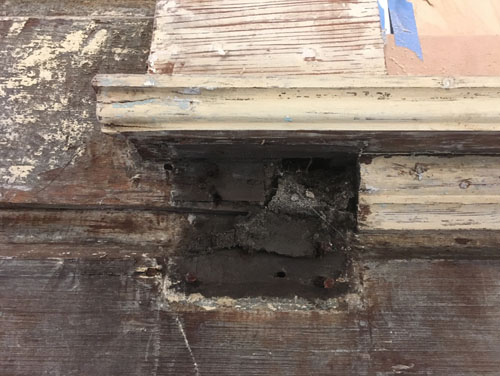
That big chunky black thing in the middle there is debris. Chunks of weird random inner-wall debris that are falling out of a hole. A hole that works both ways, of course.
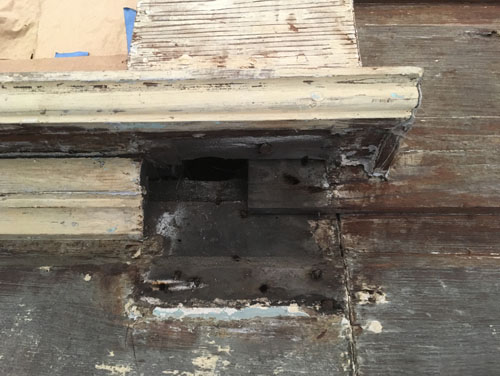
This photo shows it better. Basically, the siding ends a little short behind the jamb pilaster of the window, and any water that gets behind the trim -- which has a gap every time the siding curves inwards for the groove -- just runs down to that hole and into the house. Brilliant.
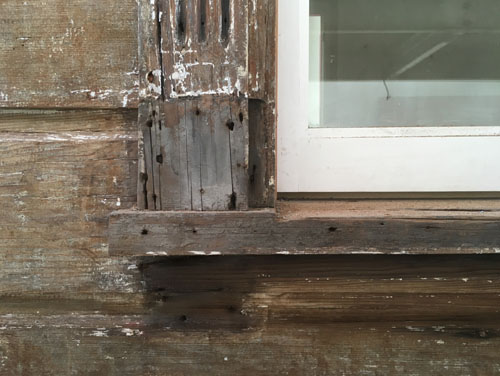
This has caused every one of these pilasters to get rotten at the bottom, which was not helped by the old felonious painters gooping it up with sealant.
How do you fix that? A couple of things. Woody is going to fill those gaps at the grooves with chunks of wood, and he is going to cut off the rotted wood, add more trim under the pilaster, and then put a repair piece of trim over it. The hole will be closed up, and so will the primary path of water.
We'd assumed the leak was coming from the metal roofs over the windows. Those are leaky and terrible, but not the way we thought.
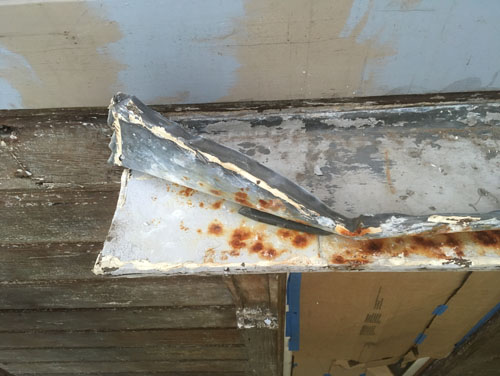
What you can see here is that Woody has peeled a layer of sheet lead off a rusting galvanized metal roof. Somebody relatively recently did this repair (we are assuming it was the previous owners, sometime around when they bought the house in 1958). We know it was post-Victorian because the Victorians tended to use an alloy of lead and tin for their metal roofs rather than pure lead sheets, as you'll soon see is what we have on the curved metal roofs at the bay window and porch.
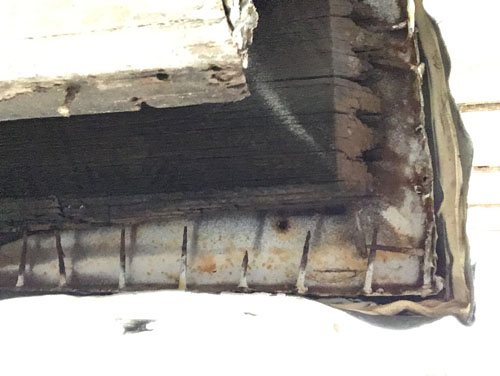
The is the view up at the bottom of that metal. Look at all those nails! Sometimes more is not better, people. The wood they were nailed into was completely rotted and needs to be replaced.
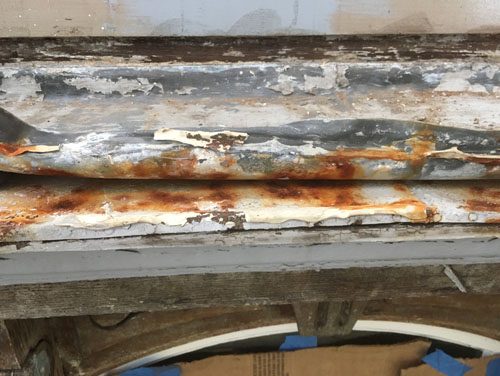
There's also quite the layer of sealant between the two roofs -- another sign that this is a modern repair. It wasn't helping.
The plan is to make some modifications to those roofs to add slope for drainage (they are currently dead flat), replace rotted trim with new stuff being milled for us, and it should be good.
In the front, the curved metal roofs we thought we would have to replace are actually in great shape under some horrible paint.
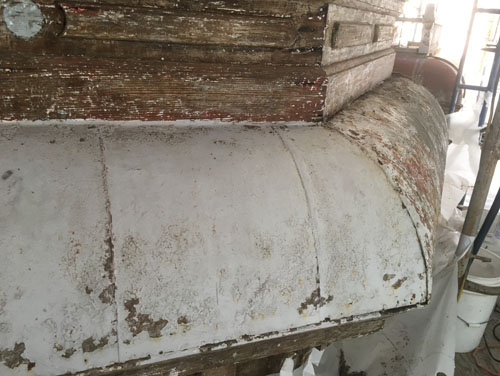
This is the roof over the bay window. It feels completely solid, there's a wooden structure under there holding the metal out. And as they strip the paint off it, it is coming off cleanly, which is great.
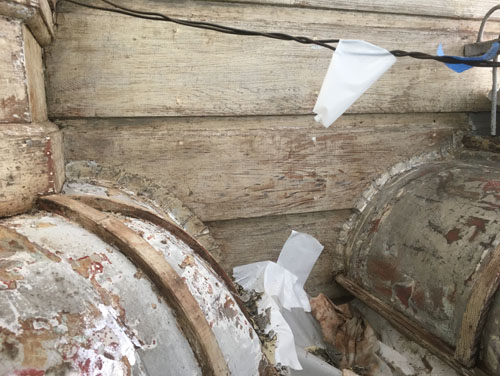
You can see in this photo how those metal roofs interact with the main house. A little strip of wood is adhered over that joint to conceal it. Not a detail I would use now but it's still solid.
The curved wooden bands are stuck quite solidly down where they are still in place -- some had rusty nails and came off easily, and those ones will be repaired or replaced.
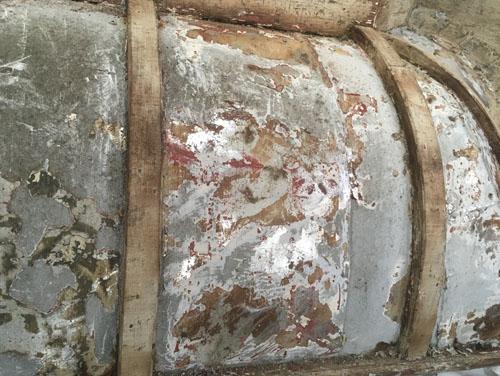
The funniest part is this: somebody painted this roof with shiny silver metallic paint at one point. (The red was the original colour, the grey was us.) Now I'm imagining this house in a combo of Barbie pink and metallic silver.
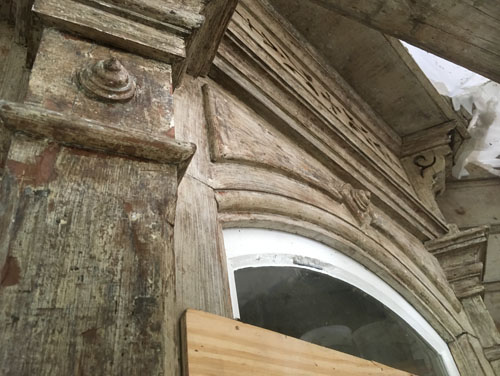
The best part of this was that the wood is actually stripping nicely, it's mostly in terrific condition, and the restorationists love it and are very happy with it. I like hearing that things can be restored; that's always my preference. After the disaster that was our window sashes, I was not too hopeful, but it looks like we have hardly any wood to replace on the facade that hadn't already fallen off.
That light layer there is the original "primer" layer: a coat of plain oil-based lead paint mixed with shellac. It sticks to the wood really well, but comes off in sheets when the right solvent is applied to it.
posted by ayse on 06/06/17